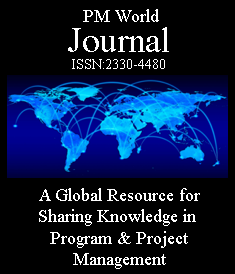LETTER TO THE EDITOR
15 October 2025
Ref: On “From Hunters to Farmers: Cultural Paradigms and Strategic Management” by Thomas Walenta (PM World Journal, October 2025)
Sir,
Thomas Walenta’s article “From Hunters to Farmers” presents a thought-provoking metaphor contrasting Western “hunter” and Chinese “farmer” paradigms. The essay insightfully links cultural heritage with strategic and managerial behavior and deserves recognition for highlighting the often-overlooked role of deep-seated cultural paradigms in shaping management logic.
Yet several points left me dissatisfied, inviting further consideration.
- Early Europeans and Chinese were not merely hunters but hunter-gatherers and also fishers
At times, hunting may have dominated their schedule, but at others, gathering and fishing were equally or even more important for survival.
Personally, I believe gardening was another activity, but as this leaves traces in people’s minds, but not in the fossil record, it’s more an opinion than scientific knowledge.
Our forebears in both regions were not just the brute beast-killing savages they are sometimes portrayed as, but highly skilled, forward-looking survivors, demonstrating deep environmental knowledge, toolmaking ingenuity, and social cooperation. These early communities laid the foundations for later forms of organization, exchange, and risk management that still resonate in modern collective behavior.
- Our Eurasian cultural evolution is not a dichotomy but a trichotomy
Both European and Chinese civilizations arose from the interaction of three ancestral roots:
-
- Stone-Age hunter-gatherers
- Late Stone-Age agricultural farmers
- Bronze-Age pastoral steppe nomads
Each contributed enduring adaptive logics – opportunistic mobility, cyclical stewardship, and networked exchange – that continue to influence economic and managerial conduct.
Reducing this to two categories risks overlooking the steppe nomad tradition, whose mobility, trade orientation, and alliance management strongly resonate with today’s cross-corporate and project-based economy and left its mark in languages we speak from Iceland to India[1].
Recent ancient DNA research reveals a notable contrast: in many Neolithic and Bronze Age European contexts, mtDNA[2] lineages (maternal) show significant continuity with early farmer populations, while Y-chromosome lineages (paternal) increasingly reflect steppe or pastoralist ancestry – a pattern sometimes interpreted as evidence for sex-biased migration or replacement in prehistory[3], [4].
More…
To read entire Letter to the Editor, click here
How to cite this work: Lehmann, O. (2025). On Cultural Paradigms , Letter to the Editor, PM World Journal, Vol. XIV, Issue XI, November. Available online at https://pmworldlibrary.net/wp-content/uploads/2025/10/pmwj158-Nov2025-Lehmann-on-cultural-paradigms-Letter-to-Editor.pdf
[1] (Haak, W.; Lazaridis, I. et al., 2016)
[2] mtDNA: Mitochondrial DNA is transferred only from the mother to her children. Y chromosomes are transferred only from fathers to their sons.
[3] (Goldberg, A.; Günther, T. et al., 2017), (Saupe, T.; Montinaro, F. et al., 2021)
[4] (Skourtanioti, E.; H. Ringbauer et al., 2023)









